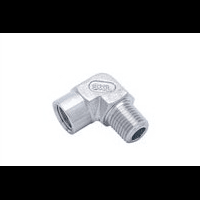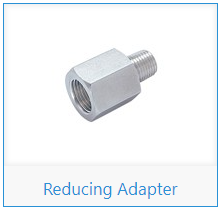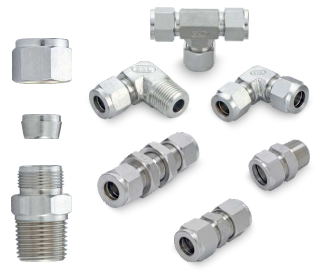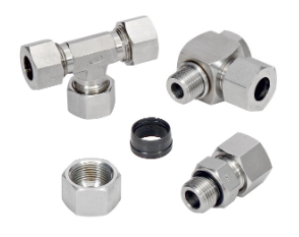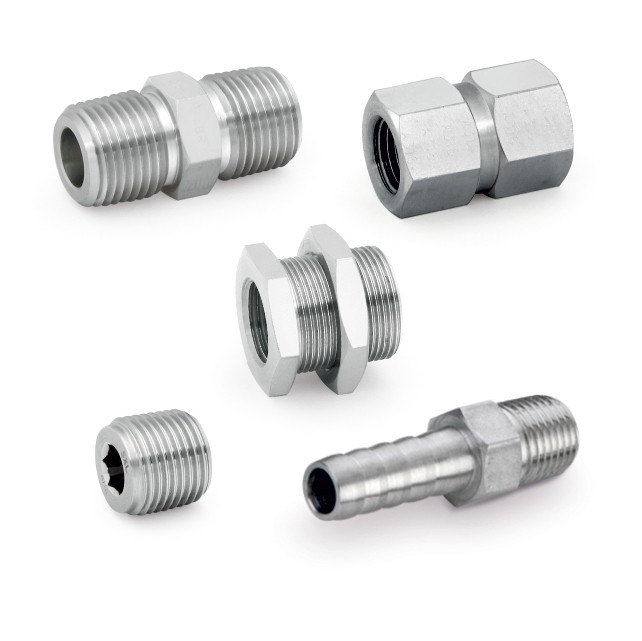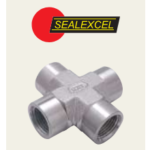
Pipe Connection Types: Sealing Your Plumbing Right
May 24, 2024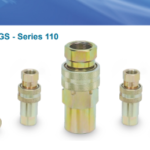
Faster Installations with Quick Coupling Pipes
July 9, 2024The world of plumbing and DIY projects might seem intimidating at first. But fear not, fellow fixer-uppers! Even the most complex systems rely on some surprisingly simple components, and coupling pipe fittings are a prime example. These handy little heroes ensure a secure and leak-free connection between pipes, forming the backbone of countless plumbing endeavors.
So, whether you’re a seasoned plumber or a weekend warrior tackling a bathroom renovation, understanding coupling pipe fittings is a valuable skill. This blog will be your one-stop guide, delving into the different types, their uses, and how to choose the right one for your project.
The Mighty Menders: Types of Coupling Pipe Fittings
Not all coupling pipe fittings are created equal! Every kind has a distinct benefit and fulfills a certain function. Let’s explore the most common varieties:
- Threaded Couplings: These workhorses are perfect for connecting pipes of the same diameter. They feature male and female threads that screw together, creating a tight and durable seal. Perfect for both metal and plastic pipes with pre-threaded ends.
- Flanged Couplings: Designed for heavy-duty applications or pipes with larger diameters, flanged coupling pipe fittings utilize bolted flanges to secure the connection. Gaskets sandwiched between the flanges provide an extra layer of leak-prevention.
- Solvent Cement Couplings: This budget-friendly option is ideal for PVC pipes. The coupling adheres to the pipe using a special solvent cement, creating a permanent and watertight bond. Remember, proper application and drying time are crucial for a successful connection.
- Compression Couplings: These versatile fittings offer a quick and easy solution for connecting pipes of different materials or sizes. An insert and compression nut work together to create a secure seal, perfect for repairs or situations where frequent disassembly might be needed.
- Union Couplings: Think of these as the ultimate problem-solvers! Union coupling pipe fittings allow for easy disconnection without disturbing the rest of the piping system. They feature a threaded nut that loosens the connection, ideal for maintenance or repairs on specific sections of the pipe.
Choosing Your Champion: Matching the Fitting to the Project
With so many options, selecting the right coupling pipe fitting can feel overwhelming. But worry not! This helpful guide will assist you in finding the ideal match:
- Material: Consider the type of pipes you’re connecting. Threaded couplings work well for metal or pre-threaded plastic pipes, while solvent cement couplings are ideal for PVC. For mixed materials or repairs, compression couplings offer flexibility.
- Size: Ensure the coupling matches the diameter of your pipes! Mismatched sizes will lead to leaks and frustration. Most fittings will display their size prominently for easy identification.
- Pressure Rating: Different coupling pipe fittings have varying pressure ratings. For high-pressure applications like water mains, choose a heavy-duty option like flanged couplings. For lower-pressure systems like household plumbing, standard couplings will suffice.
- Application: Think about the long-term needs of your project. If frequent disassembly is required, union couplings offer a convenient solution. For permanent connections, threaded couplings or solvent cement couplings provide a secure and lasting bond.
The Art of the Connection: Installation Tips for Flawless Results
Now that you’ve chosen your champion, let’s get down to the fun part – installation! Here are some general tips for a smooth and successful connection:
- Preparation is Key: Always ensure your pipes are clean, free of debris, and cut squarely. A little prep work goes a long way in creating a leak-free seal.
- Measure Twice, Cut Once: Double-check the pipe measurements before cutting to avoid any sizing mishaps. A pipe cutter ensures a clean and even cut for optimal fitting.
- Thread with Care: For threaded couplings, apply thread tape in the proper direction to create a watertight seal. Over-tightening can damage the threads, so apply gentle but firm pressure.
- Cement Savvy: When using solvent cement couplings, ensure proper application according to the manufacturer’s instructions. Clean both surfaces and apply a thin layer of cement, allowing it to set before pushing the pieces together.
- Tighten Up: For compression and flanged couplings, use a wrench to tighten the connections securely, following the manufacturer’s recommended torque specifications.
Beyond the Basics: Pro Tips for a Flawless Project
Feeling confident? Here are some bonus tips to elevate your coupling pipe fitting expertise:
- Leak Check Like a Pro: Once everything is connected, perform a thorough leak check. Turn on the water supply slowly and visually inspect all the joints for any signs of moisture. A small leak can turn into a big headache later, so it’s better to be safe than sorry.
- Deburring is Your Friend: The act of removing any sharp edges or burrs from the cut ends of pipes can significantly improve the connection and prevent potential leaks or damage to the coupling itself. A simple deburring tool can do wonders for a clean and secure fit.
- The Right Tools Make All the Difference: Having the appropriate tools on hand streamlines the process and ensures a professional finish. Invest in a good pipe cutter, wrenches of various sizes, and Teflon tape for threaded connections.
- Safety First: Always prioritize safety when working with plumbing projects. Turn off the water supply before starting and wear proper eye protection when cutting pipes. If dealing with hot water lines, allow them to cool completely before attempting any repairs.
The Final Word: Confidence Through Knowledge
The world of coupling pipe fittings might seem daunting at first, but with a little knowledge and these handy tips, you’re well on your way to tackling any plumbing project with confidence. Remember, even the most complex systems are built upon these simple yet essential components. So, grab your tools, choose the right coupling pipe fitting for your project, and get ready to connect your way to success!

